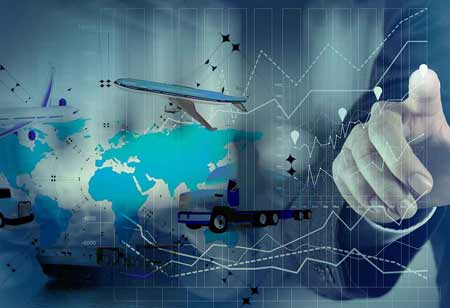THANK YOU FOR SUBSCRIBING
Be first to read the latest tech news, Industry Leader's Insights, and CIO interviews of medium and large enterprises exclusively from Gov CIO Outlook
THANK YOU FOR SUBSCRIBING

By
Government CIO Outlook | Wednesday, November 29, 2023
Stay ahead of the industry with exclusive feature stories on the top companies, expert insights and the latest news delivered straight to your inbox. Subscribe today.
The application of traffic data by smart cities for well-organized traffic management has numerous advantages, such as reduction of congestion and helping in safety and emergency situations.
FREMONT, CA: Traffic congestion has become increasingly serious, with 55 percent of the world's population staying in cities. By 2050, this figure is estimated to rise to 68 percent, and cities must prepare with practical traffic solutions. By optimizing transportation logistics and reducing congestion, smart cities offer long-term visions for traffic management. The use of connected cars and other traffic data sources is revolutionizing traffic management in urban areas in various ways:
Congestion reduction: By optimizing road logistics and routes, municipalities can manage traffic congestion using real-time traffic data. According to a McKinsey study, this can reduce commuting time by 15-20 percent in cities. Intelligent synchronization of traffic signals, variable speed limits, and real-time alerts advising drivers on the fastest route can be used to prevent congestion.
The parking lot: According to research, people looking for parking account for up to 30 percent of a city's traffic. The real-time traffic data from connected cars can be used for several parking applications, including intelligent parking planning, open space detection, and automated payment. With smart parking solutions, fewer cars circle the block looking for parking, keeping traffic flowing smoothly.
Situations of Safety and emergency: Accidents, inclement weather, and emergency situations all contribute to traffic congestion. Cities can reduce fatalities by using big data from connected cars. By implementing adaptive signaling, varying speed limits, and sending drivers alerts, dangerous situations can be mitigated. By clearing hazards quickly, faster emergency response can reduce traffic jams.
Planning for public transportation: Cities are investing in technology to improve mass transit, increase ridership and reduce traffic. Using big data can not only help cities plan the most efficient routes but also keep the system running smoothly, reducing traffic congestion. Riders and transit workers can be alerted to delays and arrival times based on real-time traffic data.
Planning for the urban environment: Traffic management requires planning for the future of urban areas. In large urban areas, such as the San Francisco Bay Area, big data is being used to plan infrastructure and development to reduce congestion. The use of location intelligence can help growing cities map more efficient road systems and plan better zoning.
Temporary urban policies can also benefit from connected car data. Tactical urbanism promotes active travel through dynamic, interim measures. For efficient implementation of such measures, including those implemented during the Covid-19 crisis to ease air pollution, connected car data insights are vital.
I agree We use cookies on this website to enhance your user experience. By clicking any link on this page you are giving your consent for us to set cookies. More info



